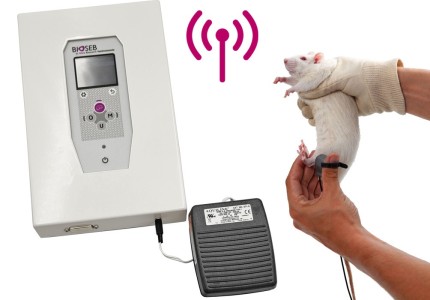Authors
P. Girard, Y. Pansart, J.-M. Gillardin.
Lab
Laboratoires Biocodex, Service de Pharmacologie, Compiègne, France.
Journal
Pharmacology Biochemistry and Behavior
Abstract
The objective of this study was to resolve discrepancies regarding the possible antinociceptive synergy between morphine and nefopam in animal models of pain. Firstly, we have examined the antinociceptive activity of nefopam, a nonopioid antinociceptive compound that inhibits monoamine reuptake, in pain models of allodynia and hyperalgesia induced by carrageenan injection, or skin and muscle incision of the rat hind paw. Single subcutaneous administration of nefopam at 30 mg/kg blocked carrageenan- and incision-induced thermal hyperalgesia, and weakly but significantly diminished carrageenan-induced tactile allodynia. A weaker dose of nefopam (10 mg/kg) only reduced carrageenan-induced tactile allodynia and incision-induced thermal hyperalgesia. Secondly, we assessed the usefulness of the coadministration of nefopam with morphine. Combination of a nonanalgesic dose of nefopam (10 mg/kg) with a nonanalgesic dose of morphine (0.3 or 1.0 mg/kg) completely inhibited carrageenan- or incision-induced thermal hyperalgesia, respectively. In carrageenan-induced tactile allodynia, coadministration of weak analgesic doses of nefopam (10 and 30 mg/kg) with a nonanalgesic dose (1 mg/kg) or moderately analgesic dose (3 mg/kg) of morphine significantly reduced or reversed allodynia, respectively. In conclusion, coadministration of nefopam with morphine enhances the analgesic potency of morphine, indicating a morphine sparing effect of nefopam.
BIOSEB Instruments Used
SMALGO: SMall animal ALGOmeter (BIO-SMALGO)
Source :
http://www.sciencedirect.com/science/article/pii/S0091305704000346

 Pain - Thermal Allodynia / Hyperalgesia
Pain - Thermal Allodynia / Hyperalgesia Pain - Spontaneous Pain - Postural Deficit
Pain - Spontaneous Pain - Postural Deficit Pain - Mechanical Allodynia / Hyperalgesia
Pain - Mechanical Allodynia / Hyperalgesia Learning/Memory - Attention - Addiction
Learning/Memory - Attention - Addiction Physiology & Respiratory Research
Physiology & Respiratory Research











![Dynamic Weight Bearing 2.0 – Postural Module [Add-on]](https://bioseb.com/733-home_default/dynamic-weight-bearing-20-add-on-postural-module.jpg)
























 Pain
Pain Central Nervous System (CNS)
Central Nervous System (CNS) Neurodegeneration
Neurodegeneration Sensory system
Sensory system Motor control
Motor control Mood Disorders
Mood Disorders Other disorders
Other disorders Muscular system
Muscular system Joints
Joints Metabolism
Metabolism Cross-disciplinary subjects
Cross-disciplinary subjects CONFERENCES & MEETINGS
CONFERENCES & MEETINGS 